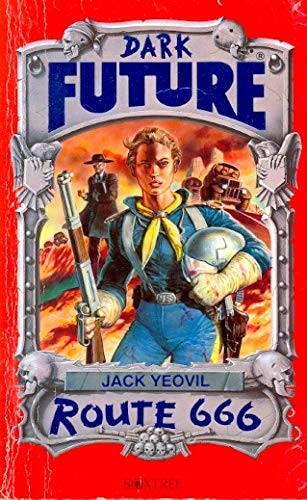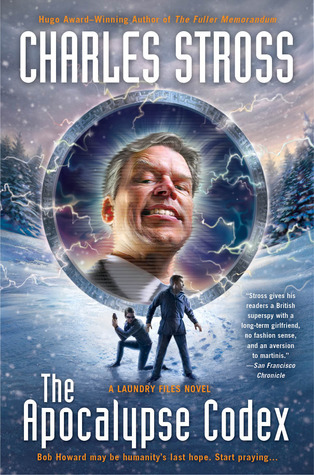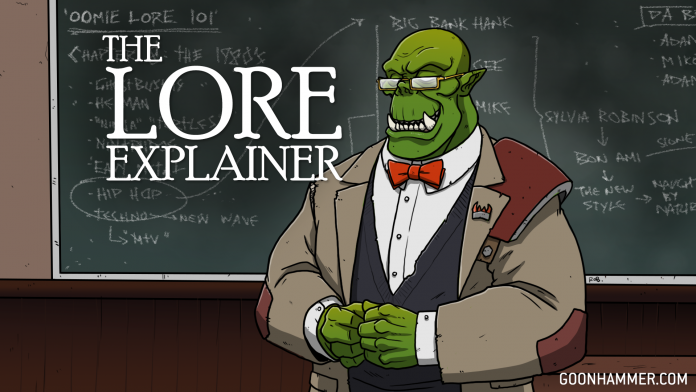This is a continuation of our series on the history of Black Library and Warhammer 40k. For the first article, which dug into the work published in the late 1980s, you can click here.
If you were a speculative fiction fan in the early 1990s, you had plenty to keep you company on your nightstand table. Dan Simmons’ Hyperion, a narrative-rich tale of religious pilgrims journeying to time tombs in a galaxy on the brink of war, was published the year prior and would go on to win a Hugo Award. Kim Stanley Robinson’s Red Mars kicked off a trilogy about the colonization of our neighboring planet, picking up a Nebula in 1993, while Lois McMaster Bujold’s critically-acclaimed Vorkosigan Saga continued to stock shelves- and her awards cabinet.
But if what you really craved were tales set in a grim, dark future where there was only war, you were left wanting after 1990’s pair of releases, the novel Inquisitor and short-story anthology Deathwing.
It was not that Games Workshop had ceased producing stories. Warhammer’s Fantasy side saw the 1991 releases of Beasts in Velvet by Jack Yeovil (the nom de plume of Kim Newman) and Storm Warriors by Brian Craig. Not only that, but Games Workshop had also recently launched another property line, this one based on a vision of post-apocalyptic America called Dark Future.

If you imagine taking Mad Max, Judge Dredd, and Car Wars and throw them in a blender, you’ll get a general sense of what Dark Future was about. It featured the United States as an archipelago of police-dominated city-states separated by vast wastelands of lawlessness, mayhem, and high-adrenaline vehicular combat.
By this point, Yeovil/Newman had been a frequent writer for the Fantasy side, with the property’s first novel (1989’s Drachenfels) and a number of short stories to his credit. He jumped into Dark Future with both feet, penning a book of short stories (Route 666) and trio of novels (Demon Download, Krokodil Tears, and Comeback Tour) between 1990-91.
In a 2022 interview, Newman discussed how he became involved with the company1.
“Games Workshop felt the need to have books that tied in with the world of their games. And they, I think quite cleverly, hired David Pringle, who was the editor of Interzone, the leading British science fiction magazine in the 1980s.
“David naturally went to all the writers he knew. Games Workshop had impressed on him that they wanted the books to make a bit of a splash. They didn’t want them to be written off as the stereotype of junk tie-in fiction, they wanted stuff that was a bit more ambitious.”
Sound familiar? That’s exactly the thinking that brought Ian Watson to the world of Warhammer 40,000 (as we explored last time), and finally in January of 1993 the wait was over.
Space Marine
Believe us when we tell you that Space Marine is quite unlike any other Warhammer 40,000 novel you’ve ever read. – The Black Library2
Space Marine tells the story of a trio of Necromundan hivers- Lexandro d’Arquebus, Yeremi Valance, and Biff Tundrish (no, really)- and their recruitment into the Imperial Fists. They go through the tests and trials to become Space Marines, and are sent on their first mission to a Tyranid hive ship.
The plot itself was straightforward enough, but that’s not what cements the book’s infamous reputation. Rather, it’s the prose.
Remember, Watson was an already-established writer with his own voice by the time he was enlisted to pen these stories for the newly-forming Warhammer 40K universe.

And what a voice it was. Consider this gripping depiction of the Imperial Fist boarding torpedo ramming into the hull of the Tyranid ship:
The nose of the torpedo impacted rupturingly in that meatus, wrenching its tissue open, burrowing deeper convulsively with thrusts of its jets as the Fists clung to stanchions.
The torpedo rocked as a shaped charge on the nose cone erupted, blasting a passageway ahead. Swiftly the spring-loaded cone itself petalled open, becoming a fourfold hatch pressing fiercely against the inner anal walls in the manner of a surgical dilator.
“Out, out, out!” This rectum of the alien ship curved rightward, aslosh with steaming cloacal fluids, banded with slowly pulsing purple peristaltic sinew. The high shriek of escaping atmosphere had already diminished to a whistle as the injured anus cramped tighter, reflexively, around the girth of the plasteel troop-carrier which had penetrated it.
No points for guessing, in this allegory, what the Space Marines stood in for as they spilled out of the boarding tube and into the quivering meat of the Tyranid vessel.
Another oft-cited passage relates to the “poop marble,” a relic resulting from the ceremony in which new recruits were inducted into the Fists. That one you can google.
Speaking in an interview with Bolthole in 2017, Watson himself noted that Games Workshop had taken issue with some of the more risqué elements of the book3.
“GW HQ in Nottingham did tell me that I would need to rewrite ‘naughty’ parts of Space Marine, but at very that moment GW Books in Brighton ceased, and it was 9 months until GW HQ hooked up with media packager Boxtree based in London as the new producer of Black Library fiction.
“In the meantime Nottingham forgot about me needing to rewrite bits of Space Marine, and I saw no reason to remind anybody, since those were bits that I particularly liked. Consequently Boxtree published Space Marine exactly as they had received it from Nottingham, unaltered.”
In his landmark history of England, Peter Ackroyd noted that “human history, as it is generally described and understood, is the sum total of accident and unintended consequences.”4 Having narrowly avoided an alternate timeline with a watered-down rewrite, we can certainly conclude that this was the case with Space Marine.
Whether we are the better for it is certainly the subject of perpetual debate in the Warhammer community. For some, these early works are better left in the rearview. For others, the zany, madcap vision of Watson’s brought a delightful bit of absurdity to an already over-the-top universe.
If you visit the book’s page today on the Black Library site, it comes with a disclaimer which reads, in part:
Although the temptation was great to rewrite significant portions of this book to make it conform to current background, as a curiosity piece, an historical snapshot of the Warhammer 40,000 universe circa the early 1990s, this book is invaluable. It also serves as a shining example of what can happen when a respected genre author at the height of his powers is let loose on an established shared universe.2
In 2010, the Black Library issued a new printing of Space Marine under its nascent Heretic Tomes imprint. This product line had been established to allow reprinting of older titles that were “the kind of novels that we wouldn’t want to put on the shelves of a Games Workshop or bookstore because anybody unfamiliar with Warhammer or Warhammer 40,000 might get the wrong idea and come away with an inaccurate picture of our fictional universes.”5
Indeed.
In Our Next Installment
With the Black Library officially launched in 1997, we’ve got one more episode to go in this early, Watsonian pre-history. More intrigue! More incredulous plot devices! And more of the writer’s barely-disguised sexual fetishes!
Stay tuned as we conclude the Inquisition War Trilogy.
Audience Participation
Firstly I’d like to thank the Goonhammer readers and Reddit’s Black Librarians for the incredible reception to the inaugural article in this series. It’s wonderful to see so much enthusiasm for the Black Library as a whole and its history in particular.
Of course, with a topic as vast as this, there were bound to be things I missed and I’m grateful for the community for their insight, guidance, and advice. Some that stand out:
1. 40K Only?
Between the fantasy and science-fiction halves of the Black Library, it’s a massive, sprawling tale. Rather than telling the entire story, I decided at the outset that I’d let the series focus on one half of that equation and tell it from the 40K perspective. I didn’t make that clear in the kickoff article, and for those who were surprised and disappointed to find the Fantasy element missing, I apologize.
From Fantasy to Age of Sigmar, it’s a rich setting worthy of its own treatment. If you’ve got an encyclopedic knowledge of it and have been itching to write, I would absolutely encourage you to reach out to the Goonhammer team and pitch the series. I know I’d love to read it!
2. De-Strossed Charles
Readers let me have it over this one- and rightfully so. As someone who grew up in the early 80’s loving Dungeons & Dragons, the British-developed content always had an extra allure. Whether it be the more exotic flora and fauna in the Fiend Folio or some of the UK-sies adventures (hey there UK7: Dark Clouds Gather!), I was delighted to find a connection with one of the early Black Library authors.

That’s all well and good, but the sin of omission was in not expounding on some of Charles Stross’s other, more substantial accomplishments. Consider, for instance, his tally of three Hugo Awards for novellas (2005, 2010, and 2014). Or that from 2004 to 2009, he also had a novel nominated for a Best Novel Hugo. Accelerando was the 2006 Locus Award winner for Best Science-Fiction Novel, and he picked up a Locus for Best Fantasy Novel in 2013 for The Apocalypse Codex. I could go on, but you get the point. Sorry, Charlie!
Footnotes
1. Everybody makes monsters: An interview with Kim Newman
2. Black Library – Space Marine (eBook)
3. BACK TO THE FUTURE: SPACE MARINE! – Ian Watson
4. History is An Accident – Tim Miller
5. The Black Library :: Bringing the worlds of Warhammer and Warhammer 40,000 to life
Have any questions or feedback? Drop us a note in the comments below or email us at contact@goonhammer.com. Want articles like this linked in your inbox every Monday morning? Sign up for our newsletter. And don’t forget that you can support us on Patreon for backer rewards like early video content, Administratum access, an ad-free experience on our website and more.


